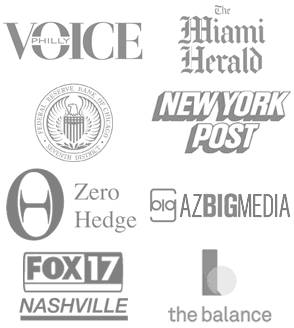Buying a home in 2025 is both exciting and competitive. With mortgage rates, property prices, and lending requirements evolving, preparation is more critical than ever. Whether you’re a first-time homebuyer or a seasoned homeowner, having a solid mortgage borrower to-do list can give you a significant edge. Think of this as your personal blueprint—because securing a mortgage is not just about signing paperwork, it’s about building a foundation for your future.
Borrower Checklist Step-by-Step Guide to Getting Mortgage-Ready This Year
The RefiGuide has bee connecting borrowers with trusted banks and mortgage lenders for competitive home loans with and free pre-approval letters for qualified buyers.
In this guide, we’ll walk through the ultimate mortgage borrower checklist for 2025, share a real-world case study, and provide actionable insights to position you for mortgage approval success.
✅ 1. Check and Improve Your Credit Score
Your credit score is one of the most influential factors in qualifying for a mortgage and securing a competitive interest rate. In 2025, lenders are prioritizing borrowers with scores of 680 or higher for most conventional loans, with 740+ unlocking the best rates.
Action Items:
-
Request free credit reports from AnnualCreditReport.com
-
Dispute any errors or inaccuracies
-
Pay down credit card balances to lower your utilization ratio
-
Avoid opening new credit accounts within 6 months of applying
Pro Tip: A small score bump of just 20–40 points could save you thousands in interest over the life of your loan.
✅ 2. Organize Your Financial Documents
Lenders need to see a complete financial picture. Collecting and organizing key documents in advance can significantly speed up the mortgage process.
Gather These Documents:
-
Last 2 years of W-2s and tax returns
-
Recent pay stubs (30 days)
-
Bank statements (2–3 months)
-
Retirement/investment account statements
-
Proof of additional income (rental, alimony, etc.)
Self-employed borrowers should also prepare:
-
Profit and loss (P&L) statements
-
Business bank statements
-
1099s or K-1s
✅ 3. Calculate Your Budget and Determine Affordability
Mortgage pre-approval is only one side of the coin. You should also define what you’re comfortable paying each month, factoring in all homeownership costs—not just the loan.
Estimate Monthly Costs:
-
Principal and interest
-
Property taxes
-
Homeowners insurance
-
HOA fees (if applicable)
-
Maintenance and utilities
Use mortgage calculators to estimate affordability. Lenders typically allow a debt-to-income (DTI) ratio of 43% or lower, but keeping your housing expenses below 30% of gross income is ideal.
✅ 4. Save for Down Payment and Closing Costs
In 2025, most conventional loans require a minimum 3%–5% down payment, but putting down 20% can eliminate private mortgage insurance (PMI) and reduce your interest rate.
Also budget for closing costs, which typically range from 2% to 5% of the home’s purchase price.
Helpful Tips:
-
Set up automatic savings transfers
-
Explore down payment assistance programs (especially for first-time buyers)
-
Ask your lender about lender-paid closing cost options
✅ 5. Get Pre-Approved by a Reputable Mortgage Lender
A pre-approval letter shows sellers you’re a serious, qualified buyer. In competitive housing markets, this can be your golden ticket.
When shopping for a lender:
-
Compare rates from banks, credit unions, and mortgage brokers
-
Ask about loan programs, fees, and timelines
-
Choose a lender experienced in your specific borrower profile (e.g., self-employed, VA, FHA)
Would you board a plane without checking where it’s going? Then don’t start house hunting without getting pre-approved. Knowing your mortgage limits helps you shop smart.
✅ 6. Avoid Major Financial Changes
Once you’ve started the mortgage process, avoid doing anything that could negatively affect your credit or financial profile.
Avoid These Pitfalls:
-
Changing jobs or income sources
-
Making large deposits without documentation
-
Taking on new debt (car loans, credit cards)
-
Missing any existing payments
Even after pre-approval, lenders will re-check your credit and employment before closing—so consistency is key.
✅ 7. Know the Different Loan Types Available
Understanding the different loan options helps you choose what’s best for your financial goals.
Popular Loan Options in 2025:
-
Conventional Loan: Great for borrowers with strong credit
-
FHA Loan: Ideal for low-to-moderate income buyers with less down
-
VA Loan: Zero-down option for veterans and active-duty military
-
USDA Loan: For rural and qualifying suburban homebuyers
-
Jumbo Loan: For loan amounts above conforming limits
-
Bank Statement Loans: Designed for self-employed borrowers
✅ 8. Stay in Touch with Your Lender and Realtor
Communication is vital. Stay proactive in providing documents and asking questions. Respond quickly to requests to avoid delays.
Case Study: How Preparation Helped a Borrower Get Approved Faster
Background:
Sandra, a freelance graphic designer in Denver, wanted to buy her first home in early 2025. She had a solid income but lacked traditional W-2s. Knowing her income type could complicate approval, she began preparing six months in advance.
Steps She Took:
-
Boosted her credit score from 680 to 710 by paying down credit cards
-
Saved $20,000 for a down payment and reserves
-
Consulted a mortgage broker familiar with bank statement loans
-
Prepared 12 months of personal and business bank statements
-
Stayed organized and responsive during underwriting
Outcome:
Sandra was pre-approved and closed in just 28 days. Her preparedness and understanding of non-traditional mortgage options gave her an edge. She now owns a condo in a hot market—and avoided the stress many face during mortgage approval.
✅ 9. Understand the Appraisal and Inspection Process
Once under contract, your lender will order a home appraisal to ensure the property is worth the loan amount. A home inspection isn’t mandatory, but it’s highly recommended.
Tips:
-
Attend the inspection if possible
-
Review the appraisal and inspection reports carefully
-
Be prepared to renegotiate if major issues are found
✅ 10. Be Ready for the Final Loan Approval and Closing
After the appraisal and final underwriting, you’ll receive a Clear to Close—the lender’s green light to finalize your mortgage.
Final Checklist Before Closing:
-
Review the Closing Disclosure
-
Avoid large financial changes
-
Confirm wire instructions with your title company
-
Bring your ID and cashier’s check to closing (if needed)
After closing, the home is officially yours—congrats!
Key Points on Getting a Mortgage This Year
-
Mortgage borrower checklist 2025
-
How to get approved for the best mortgage in 2025
-
Mortgage to-do list for homebuyers
-
Best mortgage prep steps
-
What documents do I need for a mortgage
-
How to get a pre-approved home loan
-
Free mortgage pre-approval
Your Mortgage Journey Starts Now
Buying a home in 2025 doesn’t have to be overwhelming. With the right preparation and mindset, you can navigate the mortgage process smoothly and confidently. Think of your mortgage borrower to-do list as your roadmap: the more prepared you are, the fewer surprises you’ll encounter along the way.
By checking off each step, staying financially disciplined, and working with the right professionals, you’re well on your way to unlocking the door to your next home.

